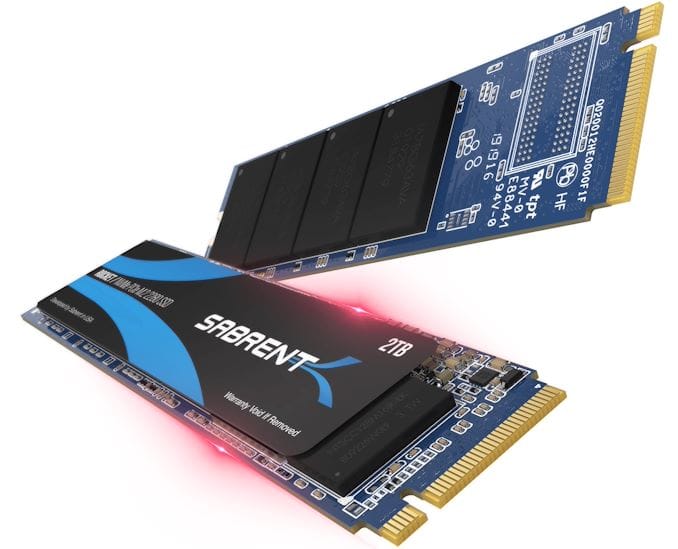Unpacking the Creation of 128TB NVMe SSDs

The Quest for Capacity: Understanding the Need for 128TB NVMe SSDs
The Rise of High-Capacity Storage Demand
The demand for high-capacity storage solutions is on the rise, driven by applications like data centers, cloud storage, and big data analytics. As the amount of data being generated and stored continues to grow exponentially, organizations are facing significant challenges in managing and storing this data efficiently.
The Unparalleled Storage Density of 128TB NVMe SSDs
128TB NVMe SSDs offer unparalleled storage density, making them an attractive option for enterprises and data centers. With their massive capacity, these SSDs enable organizations to store vast amounts of data in a compact footprint, reducing the need for multiple storage devices and minimizing space requirements.
Benefits of High-Capacity Storage Solutions
The need for high-capacity storage solutions like 128TB NVMe SSDs is further amplified by their ability to:
- Improve storage efficiency and reduce costs
- Enhance data center scalability and flexibility
- Support the growing demands of data-intensive applications
The Building Blocks: Key Components of 128TB NVMe SSDs
Quad-Level Cell (QLC) NAND Flash Memory
At the heart of 128TB NVMe SSDs lies Quad-Level Cell (QLC) NAND flash memory, a revolutionary technology that has been instrumental in achieving unprecedented storage capacities. QLC NAND flash memory stores four bits of data per cell, doubling the storage density of its predecessor, Triple-Level Cell (TLC) NAND. This increased storage density enables more data to be stored in a smaller physical space, paving the way for the creation of 128TB NVMe SSDs.
NVMe Protocol and PCIe Interface
Another critical component of 128TB NVMe SSDs is the NVMe protocol, combined with the PCIe interface. NVMe (Non-Volatile Memory Express) is a protocol designed specifically for flash storage, enabling faster data transfer and lower latency compared to traditional storage protocols. The PCIe (Peripheral Component Interconnect Express) interface further accelerates data transfer, providing a high-speed pathway for data to travel between the SSD and the system. This powerful combination ensures that 128TB NVMe SSDs can handle demanding workloads with ease, making them ideal for applications that require high-speed data access.
The Manufacturing Process: Bringing 128TB NVMe SSDs to Life
Step 1: Wafer Fabrication - The Foundation of Flash Memory
Wafer fabrication marks the beginning of the manufacturing process, where silicon wafers are crafted to create the foundation of the flash memory. This intricate process involves layering materials, etching, and doping to create the desired semiconductor properties.
Step 2: Die Preparation - Crafting the Heart of the SSD
Die preparation involves cutting the fabricated wafers into individual dies, each containing the flash memory cells. This step requires precision and care to ensure the dies meet the required standards.
Step 3: Chip Assembly - Bringing the Components Together
Chip assembly involves combining the prepared dies with other essential components, such as controllers and interfaces, to form the complete SSD chip. This step requires advanced expertise and specialized equipment.
Advanced Manufacturing Techniques - Pushing the Boundaries of Capacity
To achieve the massive 128TB capacity, advanced manufacturing techniques come into play. These include:
- 3D NAND: Stacking flash memory cells in three dimensions to increase storage density.
- 232-Layer NAND: A cutting-edge technology that stacks 232 layers of flash memory cells, significantly increasing capacity while reducing physical size.
These innovative techniques enable the creation of high-capacity NVMe SSDs, revolutionizing storage solutions for data centers, cloud computing, and beyond.
The Future of Storage: Trends and Innovations in 128TB NVMe SSDs
The storage landscape is on the cusp of a revolution, with industry leaders like Samsung pushing the boundaries of capacity and innovation. The recent unveiling of 128TB NVMe SSDs marks a significant milestone, but it's only the beginning.
Pushing the Boundaries of Capacity
Samsung and other industry leaders are forecasted to release 1PB (1 petabyte) SSDs in the near future, further blurring the lines between storage and memory. This exponential growth in capacity will have far-reaching implications for data centers, cloud storage, and even consumer devices.
Emerging Technologies Set to Revolutionize Storage
Emerging technologies like Phase Change Memory (PCM) and Spin-Transfer Torque Magnetic Recording (STT-MRAM) are poised to further revolutionize storage. These technologies promise even faster speeds, lower latency, and greater endurance, making them ideal for demanding applications like AI, machine learning, and IoT.
PCM, for instance, stores data by changing the phase of a material, allowing for faster write speeds and greater durability. STT-MRAM, on the other hand, uses spin-transfer torque to record data, resulting in lower power consumption and faster access times.
The Future of Storage: Trends and Innovations
As storage capacities continue to grow, we can expect significant trends and innovations to emerge, including:
- Increased adoption of NVMe SSDs in data centers and cloud storage
- Greater emphasis on storage security and encryption
- Emergence of new form factors and interfaces (e.g., PCIe 5.0, CXL)
- Integration of AI and machine learning for predictive storage management
The future of storage is exciting and rapidly evolving. As we continue to push the boundaries of capacity and innovation, we can expect significant impacts on industries and applications across the globe.
Conclusion: The Impact of 128TB NVMe SSDs on the Storage Landscape
A New Frontier in Storage Capacity and Performance
128TB NVMe SSDs represent a significant leap forward in storage technology, offering unprecedented capacity and performance. This monumental achievement marks a major milestone in the evolution of data storage, enabling users to store and process vast amounts of data at incredible speeds.
Meeting the Growing Demand for High-Capacity Storage
As the demand for high-capacity storage continues to grow, innovations like 128TB NVMe SSDs will play a vital role in shaping the future of data storage. The increasing need for efficient data management, driven by applications like big data analytics, artificial intelligence, and the Internet of Things (IoT), makes these advancements crucial for supporting the next generation of data-intensive technologies.
A Catalyst for Innovation and Advancement
The introduction of 128TB NVMe SSDs will have a profound impact on various industries, from data centers and cloud storage to enterprise and consumer applications. By providing unparalleled storage density and performance, these SSDs will enable new use cases, drive innovation, and push the boundaries of what is possible in the realm of data storage.


:max_bytes(150000):strip_icc()/dog-treats-glass-storage-container-3f5d7e36-81df4011d844459c9272c9c8404bc38d.jpg)















Comments ()